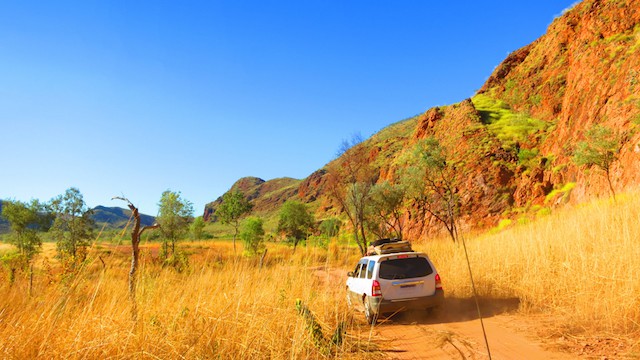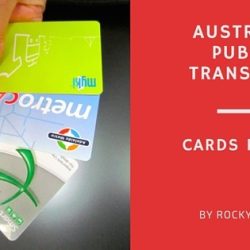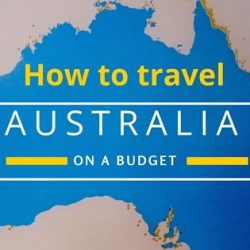Tips For Driving In Australia As A Tourist
Tips for Driving in Australia
There are many ways to travel around Australia, but if you ask me, driving is easy and the best way to explore the country. Here is a complete guide on what you need to know for driving in Australia as a tourist, and we share our advice. I went on solo road trips around Australia, and I loved them.
However, it takes time to get familiar with the idea of driving. This mental block is probably due to driving on the left side of the road. But once you start, you soon realise this is a minor thing. Starting with easy road trips is key. This will help build confidence when driving solo in Australia.

Driving Licence Requirements for Tourists in Australia
Here are the most common questions you may come up with when you think of driving in Australia on your holidays.
1. Can I drive in Australia as a tourist? The answer is simple: yes, you can.
2. What side of the road does Australia drive on? The answer is on the left side, but forget about this. It’s much easier to drive on the left if you come from a right-side driving country than you may think.
3. Do you need an international driver’s license to drive in Australia? Yes, you do.
If you don’t have an English driving license, you will need an English translation of a valid driving license for driving a car in Australia. You can get it from the officers who issued your original driving license. The translation cost, a.k.a. The International driving license, varies depending on your home country and is valid for 3-5 years.
Australia Traffic and Driving Rules
As mentioned above, in Australia, people drive on the left side. And driving on the left can be a bit confusing for first-time visitors from countries like the United States, continental Europe and the rest of the world, where you drive on the right side.
While following the traffic flow in cities and populated areas helps you get used to it, it does require a bit more attention in the Outback and rural regions. It’s easy to go on the wrong side of the road if you are not used to driving on the left. So take it easy, drive slowly, and possibly only in the daytime. Below are my best tips and road trip advice.

- Drive on the left side consistently on all Australian roads. I have been driving solo on many road trips, and driving on the left was easy to adjust to. My advice is to use automatic rental cars. I recommend everyone willing to go on a self-driving trip. That will help you concentrate on the traffic flow and reduce distractions, i.e., getting used to the left-hand side gear.
- Stay in the slow lane, which is the most left lane on the road, and overtake on the right side. Passing lanes for short stretches of 1.5 km in Australian rural areas helps you let fast drivers pass.
- Give way to the right, also at roundabouts. In some regions of Australia, you must be aware of road conditions and roadwork. It cannot be very clear at crossroads or T-intersections.
- Enter roundabouts clockwise in Australia; there are many roundabouts in the countryside. By entering roundabouts on the left (clockwise), you give way to the right. However, Australians don’t like to slow down and tend to drive through the roundabouts very fast. So pay attention when approaching roundabouts. Times, there are series of roundabouts within short driving distances, and some are real monsters with built-in smaller roundabouts and multiple exits.
- Beware of speed limits in Australia: they are 100-110 km (62-68mph) in most states. Northern Territory has a speed limit of 130 km (80 mph). Speed limit cameras and police checks are everywhere and in scarcely inhabited Outback roads where you wouldn’t expect to have cameras or police checks. The standard city speed limit is 60-50 km h (31-37mph).
- Don’t drink and drive in Australia – 0.05 bac is the blood alcohol driving limit, the same as in Europe. So beware of this because penalties and fines in Australia are high for drunk driving.
Road Signs in Australia
Australia’s natural environment is a major attraction for travellers, but it also conceals hazards that are often unknown to most people, especially overseas travellers. Not surprisingly, safety is a major concern for local authorities across the country.

Fatigue significantly impacts driving performance and is the primary cause of all car accidents on Australian roads. Also, the danger of animals crossing the streets requires attention and high concentration while driving at night in Australia. Wildlife crossing the roads is common on Outback roads.
As soon as you drive out of town and more frequently in the Outback areas and nearby natural parks and forests, you will come across the unmistakable yellow warning signs with the black animals’ silhouette that warn you when approaching Australia’s natural parks and wilderness areas. And the number of injured Australian animals on the roadsides is tangible proof of the danger.

There is plenty of informative material about Australian natural dangers and road hazards everywhere at beaches, national parks, roads, and public places dotted with warning road signs.

What to know about Travel Distances in Australia
Here below our best advice and tips for diving adventures in Australia.
Australia is a top country of unique beauty and vastness. Its amazing, varied landscapes make it an ideal destination for road trips. However, choosing the right road trips is difficult, mostly because of Australia’s long driving distances and the many road hazards. No matter how you choose your Australian road trip, solo or with a travel companion, you prefer short road trips with exciting things to see and more options for stopovers.

- Make sure you have a map of the travel distances.
Calculate the driving route accordingly. Check the above chart of the distances between main cities in Australia. - Pick a road trip destination with good road conditions.
No rain or bad weather conditions. Ask for info and advice about the picked route before leaving for your destination. - Let someone know about your road trip.
No matter where you go. Either the local tourist office, the local police officers or the main road officers. - Have a travel distance map.
Distances are in km, and next to each field, it shows you the average time for driving those distances. - Plan several breaks on all driving route.
To avoid burnout, it is critical to plan many stops when driving in Australia. Although traffic is almost nonexistent in rural areas, long hours behind the wheel and remoteness make the long-distance drive challenging. - Never drive if you are tired or feel drowsy.
There is car parking on highways, and resting areas, in the Outback. Service stations or Roadhouses are the best places to stop for a cuppa or stay overnight. - Don’t drive at night, dawn or dusk.
When hiring a car, one of the first things you will need to know is that you are not allowed to drive at night in Australia. Also, travel insurance will not cover you if you drive a rental car at night. - Have a map of all Services Station.
Petrol stations in Australia are called “Servos” and are all self-service and take credit and debit cards. In rural areas and the Outback, there are only a few of them, and they are long distances apart. Keep your car topped up and fill up at every petrol station. This will give you peace of mind and help you stick to regular breaks from driving. - Use a driving distance calculator.
If you don’t have a printed-out map to help you determine what to expect and evaluate potential driving routes, you can use a driving distance calculator like Google Maps. This gives you an idea of the route length and difficulty. This is another great tool to help you calculate road distances with fuel usage and road conditions. - Be sure your car is prepared.
Many solo travellers in Australia feel overwhelmed when it comes to planning a road trip. With the right information and adequate preparation, you can nonetheless have a fantastic experience without having to be an expert driver nor using a four-wheel-drive car. Check car conditions, road and weather conditions. Be sure your car is prepared and in an excellent state for driving the route to your destination.
What to Pack when Driving in Australia
If you plan to hit the road in Australia, make sure you have all these essential packing items with you:
- A full water tank with at least 10-15 litres of pure water is the one thing you should be packing into your car. Shop for food in the central town to be self-sufficient along your way or at least till your next destination. In rural and Outback areas, there are few small shops. You can buy some food at service stations, but don’t expect to find as much as you see in town. It is also expensive to shop.
- Pack essential camping gear like:
1. A blanket,
2. A small gas-fired heater,
3. Headlights,
4. A warm jacket
If your car breaks down at night, you will be safe. - Phone coverage is not something you can take for granted in Australia. In a rural area, the internet is slow. And on long roads of isolated regions, there is no coverage at all. I followed the tip of my Aussie friend years ago, and since then, I only use a prepaid Telstra sim card. It’s the best. Telstra is Australia’s only phone and internet provider that can guarantee decent coverage. But still, don’t expect to have a phone connection in the middle of nowhere. That’s the downside of driving remote regions of Australia.
Tips for Travelling the Australian Outback
Driving in the Australian Outback requires even more attention than on normal roads. It is by far the most challenging drive for international travellers. The major concern on the Outback roads is the high risk of wildlife crossing the roads, especially at night.

Here are 9 tips for driving safely in the Outback
If you love road-tripping, you will love driving the Australian Outback. This will be the most exciting part of your entire Australian Adventure. Here below, I have compiled a list of simple road safety tips for you to use when preparing to drive the Australian Outback:
- Seek the advice of the local police, tourism office and local national park rangers.
Only access the Outback area if conditions allow it. Be sure you have an updated and detailed map. - Check Road Conditions
You can download one from the internet that you can use offline and bring a print-out of the map. Unsealed roads are exposed to high traffic and climate hazards like heavy rains, which cause bog holes, floods, washouts and corrugations. Here below is a list of the websites where you can find reports about the Australian Road Conditions for each relevant area:
Northern Territory and Central Australia
Kakadu National Park
Western Australia Roadworks
Transport South Australia
Queensland Road Conditions - Check the weather conditions in advance and monitor the progress of local hazards like cyclones, fires and floods. Here are sites for you to check:
Weather Conditions and Warnings
Australia Weather Radar Images - Ensure your 4WD vehicle is in peak condition.
If a breakdown occurs, repair facilities are limited and can be costly. Make sure your vehicle insurance covers you throughout your trip. - Have cash, not all service stations accept credit cards.
Some service stations in the Outback close early at 5:00 p.m., and many are not open at night, on Sundays, or on public holidays. You can download a Fuel Map App to find petrol stations along your driving route. - Be Self-sufficient
Carry a full range of spare parts, a vehicle workshop manual, and complete equipment recovery, first aid kit, communications and camping gear. - Hire a satellite phone.
Learn how to use a satellite phone, and remember that mobile phone coverage is mainly limited to towns. Learn primary navigation, take a complete set of maps and GPS and know how to use them. - Carry plenty of water:
Take three litres per person/day of food and fuel with you, including at least three days’ emergency supply. Remember that there are few facilities in the outback, and even at the isolated fuel stations, their offerings are limited. - Take frequent breaks
Stop and have often rest, and swap the drive. Do not underestimate the long distances. Fatigue from the long driving distances and wildlife on the roads are the most hazardous on the Australian Outback roads. - Tell someone about your Outback itinerary—a friend or family, where you are heading and your plan.
A road trip to Uluru and driving across the Red Centre of Australia is a great way to start exploring the Outback.
Pin these photos for later!

First published in 2017 and last updated in Dec 2024
Go back to Australia Travel and Rocky Travel
PLAN AND BOOK YOUR TRIP




Keith Kellett
March 26, 2014 @ 7:15 am
Not allowed to drive rentals at night? New one on me! I’ve rented several cars, usually from Hertz (Australia) & they’ve never said anything about that. (although they did say the insurance would be void if I took it offroad)
I would add, though … give roadtrains plenty of space. They take forever to stop, and take no prisoners! 😀
Rocky Travel
March 26, 2014 @ 10:49 am
That’s correct, it’s not allowed to drive at night with a rental car! Beware if you do it and have an accident you are bound to pay the entire costs, as no travel insurance will cover you! Thanks for the tip with the roadtrains. 🙂
Keith Kellett
December 29, 2015 @ 1:20 pm
I checked with Hertz in Adelaide when I rented a car from them last month. You CAN drive it after dark …. BUT you’re fully liable for any damage caused by hitting any wildlife.
Rocky Travel
December 30, 2015 @ 11:16 am
Hi Keith, thanks for this update. I know that some car rentals companies allow you to drive at night, with this clause. I personally wouldn’t take the risk. There is no travel insurance that will cover you, in case of a damage caused. So I think it is silly to take this risk, unless you really have an emergency I wouldn’t drive at night. 🙂
Agness
July 20, 2017 @ 2:37 pm
Your tips are very useful and practical! This is an exceptional post!
Art
July 22, 2017 @ 6:45 pm
Hey, Michela. Wow, these are very detailed tips. Excellent! These are very helpful, especially for the solo travellers. I would like to add that even if you’re accustomed to driving on the left side, it’s still advisable to be careful because you may encounter other drivers who are not used to it. Also, never forget the first aid kit, tools, and necessary car accessories such as an air compressor.The guys from westcoastsuspension were the ones who helped me with what I needed for my 4WD for our long drive. Hope that helps.
Sam
August 26, 2017 @ 3:33 pm
Very useful tips, thank you for the info! 🙂
Linda Ballou
June 21, 2018 @ 5:37 pm
I have a california u.s. license. Do I need an international license in addition to rent a car in Austalia? Who do I contact to get an international license?
Thanks
Linda
Rocky Travel
June 21, 2018 @ 6:03 pm
Hi Linda, yes you can drive in Australia with your US driving license, (because it’s in English and regarded as a valid license), however only for three months and as a tourist. You can only drive vehicles that your license allows.